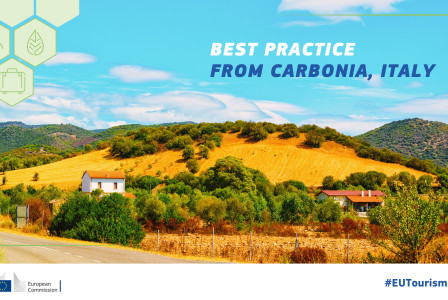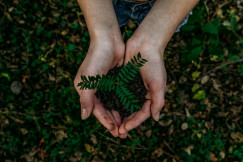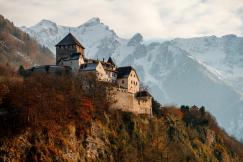Best practices
22 August 2025
Sustainable EU Tourism Project - Best Practice: Carbonia
Best practices
22 August 2025
Cultural tourism
Gastronomy tourism
Rural tourism
+8 more
Login / create an account to be able to react
-
8

Carbonia, Italy, has redefined its identity by transforming from a former mining town into a cultural tourism destination. Through the regeneration of industrial and archaeological sites, the integration of immersive digital technologies, and the preservation of local language and heritage, Carbonia has created a sustainable tourism model that celebrates its unique history while fostering economic revitalisation.
Sustainable EU Tourism project
Topics
Italy
Cultural and Heritage Organisations
Local Authorities
Regional Authorities
-
Specific types of tourism
-
-
Cultural tourism
-
Gastronomy tourism
-
Rural tourism
-
-
Transition Pathway Strategic Areas
-
-
Best practices, peer learning and networking
-
Governance of tourism destinations
-
Innovative tourism services
-
Tourism strategies
-
Well-being of residents
-
-
Business activities
-
-
Activities of associations and other organisations supporting tourism
-
Museums
-
Operation of historical sites
-
Share
Carbonia, Italy, has been recognised as a best practice by the Sustainable EU Tourism project for its innovative approach to cultural heritage preservation and destination transformation. Originally founded in 1937 to house coal miners, Carbonia faced economic decline after the mines closed in 1970. In response, the municipality, in collaboration with regional tourism associations and cultural institutions, launched a strategic regeneration initiative starting in 1999 with the “Carbonia: the landscape machine” project. This effort revitalised the town’s urban structure and converted the Serbariu mine into a museum and park.
The destination embraced digital innovation through interactive technologies at the Museo del Carbone and the Museum System of Carbonia (SiMuC), including VR, AR, and QR-coded audio tours. It also promoted linguistic heritage by offering tourist information in Sardu, the traditional Sardinian language, and joined the European Network for Linguistic Equality (ELEN). Carbonia’s membership in cultural networks such as ATRIUM and ERIH further amplified its visibility and research capacity.
These efforts have curbed depopulation, increased employment by 12%, and boosted tourism by 72% between 2022 and 2023. Carbonia’s experience demonstrates the power of cultural heritage as a catalyst for sustainable tourism, community pride, and economic renewal. It highlights how even small, post-industrial towns can reinvent themselves with a clear vision and a tourism strategy, serving as a replicable model for other destinations seeking to leverage on their heritage for economic development.
Documents
Comments (0)
Related content
See also
Sustainable EU Tourism - Key challenges and best practices
- Categories
- Coastal, maritime and inland water tourism Cultural tourism Ecotourism +64 more
EXPERIENCE: Completed initiative for boosting off-season tourism
- Categories
- Coastal, maritime and inland water tourism Cultural tourism Ecotourism +38 more
INNOCASTLE: Completed initiative for unlocking the potential of historic sites
- Categories
- Cultural tourism Ecotourism Mountain tourism +14 more






